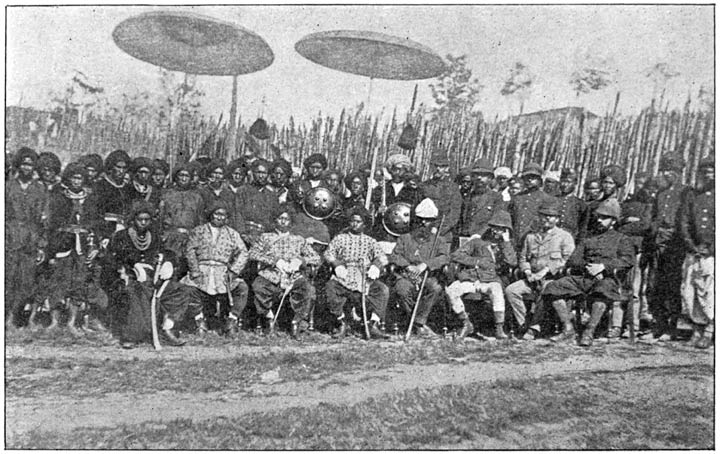The Khongjais of Manipur, also known as Khongsai or Khunchai, are an indigenous ethnic group which are integral to the region’s pre-colonial history, coexisting with tribes such as the Meitei, Tangkhul, Chothe, Maring, Chiru, Kharam, Kom and Kabui etc.
The Khongjai are a category of tribes whose identity has been influenced by the arrival of the Kukis from the Lushai Hills and Teddim Hills of Myanmar. Over time, their nomenclature has been applied to the newly arrived Kukis. Broadly speaking, the indigenous status of the Khongjai remains unquestionable. Historical accounts, such as King Pamheiba collecting tributes from the Khongjai in the southern hills of Manipur, suggest that these tribes have been integral to the region for approximately 400-500 years. While some members of the Khongjai community merged with the Meitei and neighboring tribes, others maintained their distinct identity as the Khongsai tribe.
Despite their deep-rooted presence, colonial interventions in the 19th century introduced the terms “Kuki” and “Naga,” which obscured their indigenous identity and fostered divisions. This article integrates historical evidence to affirm the Khongjais’ status as leihoumee, tracing their trajectory from early Meitei interactions, through significant events like King Bhagyachandra’s conquest, to the British reconfiguration of their identity via migrations and administrative labels. It also addresses the post-independence refugee relief funds, which erroneously categorized Khongjais of Manipur as Kuki Refugee.
The Khongjais of Manipur in Pre Colonial Era
Historical records, notably the Cheitharol Kumbaba, document the Khongjais from 1508 onward, identifying them as hill tribes staying near the Tuipui river in southern and southwestern Manipur, distinct from groups like the Tangkhuls or Nagas (Parratt & Parratt, 1997). Organized in clan-based societies practicing shifting cultivation (jhum), they maintained autonomy while engaging in trade, intermarriage, and periodic conflicts with the Meiteis (Singh, 1980). Meitei accounts often depict Khongjais as raiders, reflecting competing claims over resources, though oral traditions among clans like Haokip and Kipgen emphasize resistance to valley dominance (Grierson, 1904).
The name “Khunchai” (scattered) suggest that there numerous villages around the hills of Manipur where these tribes made their settlements. They are not nomadic like the Kukis which travels thousands of kilometers from Chittagong Hill Tracts to the Chindwin areas, the Teddim Lushai and them entered Manipur. The theory that Khongjais of Manipur derived its name from the way they shift their villages often is not correct. They were also like other indigenous tribals settling in the Manipur kingdom.
The Cheitharol Kumbaba records Meitei expeditions against the Khongjais in the 16th and 17th centuries, aimed at extracting tribute and asserting control (Parratt & Parratt, 1997). Despite these pressures, the Khongjais preserved their Tibeto-Burman dialects and animist practices, though some elites assimilated through intermarriage or adoption of Meitei customs (Singh, 2002). The chronicle also references Taothingmang, a ruler in 264 CE, speculated by some to be of Khongjai origin due to his name’s linguistic resonance, though officially a Meitei king of the Ningthouja Dynasty (Singh, 1965).
King Pamheiba’s Conquest of the Khongjais
A significant event occurred during King Pamheiba’s reign (1709–1748), when Khongjais are noted to have settled in Manipur in 1741 (Singh, 1980). The Cheitharol Kumbaba, or Royal Chronicle, documents the event with the phrase “Humni Thangjada Chothe Payaki Hao 9 Khongjaina Phakhiye” (Page-104). This refers to the abduction of nine individuals from Chothe Payaki by the Khongjai in the year 1742 A.D. This incident indicates that the Kukis had grown in strength and were bold enough to challenge Maharaja Pamheiba’s authority. Although Pamheiba was unable to respond immediately due to other engagements, he took action by dispatching his Guru, Shanti Das Gosai, in February 1742 A.D. to address the Khongjai uprising. The Guru successfully accomplished the mission and returned after 12 days (CK-page 107).
Some writers are of the view that the Khongjais later amalgamated into the Meitei folds like Heirem Khunjan and Lokkha Haokha. Unlike tribes like Kom, Aimol, and Chiru, which retained independent status, some Khongjais were integrated into Meitei administrative structures, a precursor to later colonial categorizations (Hodson, 1908). This reflects the shared ancestry of Manipur’s tribes, linked to the mythology of Konchil Tukthaba Ibudhou Pakhangba, which includes Khongjais, Meiteis, and others within the seven yek salai (clan lineages) (Parratt, 2005).
King Bhagyachandra’s Conquest of the Khongjais
The reign of King Bhagyachandra (1759–1798), also known as Chingthangkhomba, marked a turning point. In 1786, Bhagyachandra defeated a Khongjai village in the Tuipui River valley, southern Manipur, inhabited by the Lhangum clan, earning the title Khongjai Ngamba (Victor of Khongjai) (Cheitharol Kumbaba, cited in Parratt & Parratt, 1997). This conquest led to the village, called Khongchai or Khongsai, becoming a focal point for Meitei interactions with southern hill tribes.
Ningthou Bhagyachandra encouraged some Khongjais to settle near the valley, fostering partial assimilation. Khongjai individuals served in the royal court, adopted Meitei surnames, or embraced Vaishnavite practices, though most hill-based Khongjais maintained clan-based governance and animist traditions (Singh, 1980). This duality—integration versus distinctiveness—shaped their identity, with settlements like Haokip Veng and Old Lambulane evidencing their long-standing presence (Dun, 1886).
The British arrival after the Anglo-Manipur War of 1826 introduced significant changes. Adopting the Meitei term “Khongjai,” the British inconsistently grouped them with other hill tribes under the label “Kuki,” first noted in the Asiatic Researches in 1872 (Dalton, 1872). The term “Naga” similarly emerged in the 1840s, applied to tribes in present-day Nagaland and Manipur (Elwin, 1969). These colonial constructs, foreign to Manipur’s indigenous lexicon, facilitated administrative control but erased tribal specificities.
Between 1830 and 1840, British records document migrations from the Lushai Hills, Chin Hills, and other southern regions into Manipur, driven by conflicts or colonial policies (Mackenzie, 1884). These migrants, including Thadou, Paite, and Sukte clans, were labeled “New Kuki” or “New Khongjai,” distinguished from “Old Kuki” tribes like Kom and Aimol, perceived as longer-established (Reid, 1893). While colonial narratives suggest British encouragement of these migrations to counter Naga raids or secure labor (Hodson, 1908), the Cheitharol Kumbaba confirms Khongjai presence since the 15th century, indicating that “New Kuki” was a simplification of complex movements rather than a wholly foreign influx (Parratt & Parratt, 1997).
The integration of “New Kuki” clans misunderstood the earlier Khongjais of Manipur and sparked tensions over land and leadership (Grierson, 1904). British censuses and reports further entrenched the “Kuki” label, marginalizing Khongjais who resisted this identity (Dun, 1886). The Kuki Rebellion of 1917–1919, involving Khongjais and other clans, protested British taxation and recruitment, highlighting their resistance to external dominance (Shakespear, 1929). Meanwhile, Christianity’s spread in the late 19th century, facilitated by missionaries, saw many Khongjais convert, aligning with churches rather than Meitei Hinduism, further distinguishing them from valley culture (Downs, 1994).
The Refugee Narrative and Post-Independence Mislabeling
Post-independence, the Khongjais faced a new challenge with the refugee relief funds of the 1950s–1960s, initiated by Tangkhul MP Rungsung Suisa to address migration from Burma (Government of India, 1966). Under Memo P3/9/66 of the Ministry of Home Affairs, payments were disbursed to those classified as “Kukis” between 1957 and 1968, with a Kuki Refugees Relief Committee formed in 1968 under HT Pakang (Manipur State Archives, 1968). This policy, while aimed at managing migration, erroneously labeled indigenous Khongjais as refugees, a misstep that fueled ethnic tensions. In fact, the said relief was meant for those 1500 Kuki refugee from Myanmar who came and settled in Manipur around 1967.
The 1946–47 Manipur Census counters this narrative, documenting Khongjai villages like Bungpa Khullen, Chamu, and Chassad in Ukhrul, Mao, and Tamenglong, with Khongjai chiefs and taxable households (Manipur State Statistical Department, 1947). Claims, such as those by Tangkhul Naga Long’s Vareinan Gachuiwoshi, denying Kuki ancestral land in Naga districts, are thus contradicted by historical evidence (Gachuiwoshi, 2023). The refugee label has distorted Khongjai identity, alienating them from their Leihoumee heritage.
Khongjai Contributions to Manipur’s Sovereignty
The Khongjais have consistently defended Manipur’s integrity. During King Chandrakirti’s reign (1834–1886), they resisted incursions from present-day Mizoram and Myanmar (Singh, 1980). In 1949, amidst India’s annexation of Manipur, Khongjai leaders from Chassad, Aihang, and Longpi mobilized 300 armed volunteers to protect Maharaja Bodhachandra’s palace, demonstrating loyalty to Manipur’s sovereignty (Phanjoubam, 2003). During World War II, Khongjais contributed to Allied efforts against Japanese forces, reinforcing Manipur’s strategic importance (Bayly & Harper, 2005).
Colonial Legacy and Ethnic Tensions
The British imposition of “Kuki” and “Naga” tag disrupted Manipur’s tribal unity, fostering divisions that culminated in the 1990s Naga-Kuki clashes, often termed ethnic cleansing (Haokip, 2015). These conflicts spurred demands for a Kuki homeland, absent in pre-colonial Manipur, fueled by diaspora support and migration from southern regions (Thadou Community International, 2024). Such movements challenge the historical reality of Manipur’s expansive boundaries, which once reached Yunnan and the Irrawaddy River, encompassing diverse tribes (Singh, 1980).
Conclusion
The Khongjais of Manipur are indisputably indigenous to Manipur, their history interwoven with the region’s socio-political fabric since at least the 15th century. From early Meitei interactions and Bhagyachandra’s conquest to colonial migrations and post-independence mislabeling, they have navigated complex challenges while preserving their identity.
The imposition of “Kuki” labels, coupled with the refugee narrative, has distorted their Leihoumee status, fueling ethnic tensions. Historical records, including the Cheitharol Kumbaba and colonial censuses, affirm their contributions to Manipur’s sovereignty, from resisting external threats to protecting its monarchy. This article advocates for a unified narrative that celebrates the shared heritage of Manipur’s tribes, urging further research into Khongjai oral traditions and pre-colonial archaeology to counter colonial distortions and foster reconciliation.
References:
- Bayly, C., & Harper, T. (2005). Forgotten Armies: The Fall of British Asia, 1941–1945. Harvard University Press.
- Cheitharol Kumbaba, Singh, Lairenmayum Ibungohal, 1969, 104-107
- Dalton, E. T. (1872). Descriptive Ethnology of Bengal. Asiatic Researches.
- Downs, F. S. (1994). The Mighty Works of God: A Brief History of the Council of Baptist Churches in North East India. Gauhati: Christian Literature Centre.
- Dun, E. W. (1886). Gazetteer of Manipur. Calcutta: Superintendent of Government Printing.
- Elwin, V. (1969). The Nagas in the Nineteenth Century. Oxford University Press.
- Gachuiwoshi, V. (2023). Statement on Kuki Ancestral Land Claims. Tangkhul Naga Long Press Release.
- Government of India. (1966). Memo P3/9/66, Ministry of Home Affairs. National Archives of India.
- Grierson, G. A. (1904). Linguistic Survey of India: Tibeto-Burman Family. Calcutta: Government of India.
- Haokip, T. (2015). Ethnic Conflicts in Manipur: A Historical Perspective. Economic and Political Weekly, 50(42), 29–36.
- Hodson, T. C. (1908). The Meitheis. London: David Nutt.
- Manipur State Archives. (1968). Records of Kuki Refugees Relief Committee. Imphal.
- Manipur State Statistical Department. (1947). Census Schedule of 1946–47. Imphal.
- Parratt, S. N., & Parratt, J. (1997). The Pleasing of the Gods: Meitei Lai Haraoba. New Delhi: Vikas Publishing House.
- Parratt, S. N. (2005). The Court Chronicle of the Kings of Manipur: The Cheitharol Kumbaba. Routledge.
- Pemberton, R. B. (1835). Report on the Eastern Frontier of British India. Calcutta: Baptist Mission Press.
- Phanjoubam, P. (2003). The Making of Modern Manipur. Akansha Publishing House.
- Reid, A. S. (1893). Chin-Lushai Land. Calcutta: Thacker, Spink & Co.
- Shakespear, J. (1929). The Lushei Kuki Clans. London: Macmillan and Co.
- Singh, K. M. (1965). History of Manipur: An Introduction. Manipur Sahitya Parishad.
- Singh, N. T. (2002). Manipur and the Mainstream. Imphal: Rajesh Publications.
- Singh, R. K. (1980). A Short History of Manipur. Imphal: Manipur Historical Society.
- Thadou Community International. (2024). Statement on Thadou Identity. [Online source, accessed April 11, 2025].
Feature photo credited to @madify.official via Kimmi Khongsai
(C) Naorem Mohen
The Writer can be reached at Twitter @laimacha
Editor | Signpost News







